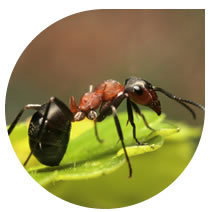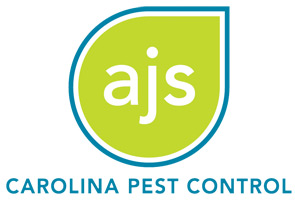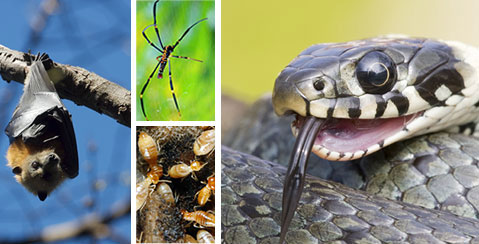Spiders:
Many species of spiders are common house hold pests in the United States. Certain common household spiders spin webs over lamps, in corners, and in basements. This is unsightly but cause no real harm. Under most conditions outdoors, spiders are considered beneficial because they feed on insects. However, they are undesirable to most homeowners when indoors, and the unsightly webbing spiders use to catch insect prey usually outweighs this beneficial behavior. Many spiders are associated with moisture and, therefore, are found in basements, crawl spaces, and other damp parts of buildings. Others live in warm dry places so are found in subfloor air vents, in upper corners of rooms, or in attics. Most species hide in cracks, darkened areas, or other retreats that they construct of silk.
Cockroaches:
Carpenter Ants are large and black. They make their homes in wood. Foraging workers have
rather large mandibles with which they can bite or give a strong pinch. Workers vary greatly in
size from 1/4" to 3/4."
Ants:
Ants are one of the most successful group of insects. They are social insects that live in colonies. Many species prefer to nest in the in the ground; others will nest in wood such as dead logs, hollow trees, or even wood within structures. Ants may enter structures for shelter and/or food. Ants consume a variety of food depending on the needs of the colony. Food preferences may also change significantly during the course of a season from carbohydrates to fats and proteins. As with many other insects, moisture is a key factor in determining the suitability of a potential harborage site. Ants will exploit situations that have sufficient moisture, provide shelter, and have a nearby source of food.
Crickets:
Crickets commonly invade homes. Often found invading crawl spaces, and basements. When present in large numbers, crickets are a considerable annoyance and can cause damage to some fabrics, such as linen, rayon, and furs. They will attack paper, all kinds of food, and even rubber.
Silverfish:
Silverfish can be found almost anywhere in commercial and residential structures, usually found living near their source of food. They will eat a wide variety of foods containing proteins or carbohydrates. Such as cotton, linen, some synthetic fibers, grains, flour, sugars, meat, dead insects, glue, paste, and paper are all normal items of their diet. In damp basements or attics they can also feed on the surface molds that grow on cardboard boxes and other substrates. Silverfish can live for long periods of time without food.
Earwigs:
Earwigs are early recognized by the pinchers or forceps like appendages at the end of the abdomen. They sometimes build up large numbers in warm weather and then may invade homes or other structures. They are primarily scavengers on dead animals or plant material, but some species are predatory. At times they will damage cultivated plants, damaging vegetables, flowers, fruits, ornamental shrubs, and trees. Earwigs are often transported great distances in potted plants, nursery stock, or other plant material.
Centipedes:
Centipedes are typically found in areas of high moisture such as loose bark, in rotting logs, under stones, piles of leaves, mulch beds, ect., where their prey is found. Even though centipedes are predaceous and therefore beneficial, most customers consider them a nuisance pest. Most centipedes are active at night. They occasionally invade structures where they survive on flies, spiders, ect. Although they may be found anywhere in a house, the usual places are damp basements, bathrooms, damp closets, and potted plants.
Millipedes:
Millipedes have high moisture needs. They are typically found in areas of high moisture and decaying vegetation such as under trash, piles of grass clippings, flower-bed mulches, leaf litter, ect. Millipedes are active at night. Millipedes will migrate in great numbers, usually in autumn. Millipedes are primarily scavengers and feed on decaying organic matter, usually plant material but occasionally dead insects. They may attack living plants during dry periods in order to obtain needed moisture. They are found in areas of high moisture in the home.
Grain moths/beetles:
The pests of stored products are so numerous that it is imposable to discuss them all here. These pest are found in mills, warehouses, processing plants, retail stores, and homes. Stored product pests contaminate- and thus eliminate for human consumption- far more food than they eat. They are the most destructive pests of stored grain, damaging about 10 percent of the world's grain production. Stored product pests are imported into the household as "pantry pests" that find their way into packaged cereals, milled cereal products, spices, dog food, pastas, grains, and other similar items.
Rats and Mice (Rodents):
As human population has expanded so has commensal rodents. Rodents are a heath and economic pest. Rats and mice attack our food while its in farm fields, orchards, and live stock facilities; during its processing, storage, and transport; and while it is in our supermarkets, restaurants, and homes. They spoil tons of food by contaminating it with urine, feces, or fur. The loss of food worldwide to rodents is staggering. In our homes and buildings rodents damage doors, walls,wiring, and ceilings from burrowing and gnawing. In today's high-tech production facilities, rodents are capable of causing millions of dollars of production loss due to shutdowns of complex computer systems when they gnaw, nest, or excrete waste inside computer systems and other highly sensitive equipment.




